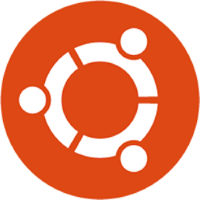Windows10 HOMEに WSL(Ubuntu) + Docker環境を構築する
この手の記事は無限に溢れていると思うので自分用に要点だけまとめます
基本的には以下のリンクを参照します
WSL
インストール
開発者としてPowershell / cmdを開き、以下のコマンドを実行します
wsl --install
インストール後、ターミナルにて再起動を促されたので再起動しました
デフォルトとしてUbuntuディストリビューションがインストールされます
ほかのディストリビューションを選択したい場合: wls --install -d
ユーザー名、パスワードを設定
スタートメニューからInstall RELEASE(Ubuntu)を選択

起動後すぐにユーザー名、パスワードを設定する必要があります
以下の入力を行います
- ユーザー名
- パスワード
- パスワード(確認)
VSCodeの拡張機能(任意)
VSCodeを使うことが多いため記載しておきます
WSLまわりの拡張機能について
前提として、VSCodeはインストール済みの想定です
参考
- VSCode拡張機能の
Remote Developmentをインストールします - コマンドパレットに
WSL: New WSL Windowと入力し、選択します
すると新しいウィンドウでVSCodeが起動します(Linuxディストリビューションにリモート接続している状態) - 拡張機能について
一部の拡張機能は、各 WSL ディストリビューションに個別にインストールする必要があります
とのこと。確認してみます

たしかにInstall in WSL: Ubuntu ⚠と表記があり、ディストリビューションごとにインストールしなければならない拡張機能があります
①のアイコンを選択することで、チェックボックスによる一括インストールが可能なようです

Docker
Docker Hubの登録をしなくてもイメージの検索と取得は可能です
以下を参照
Docker Desktopのインストール
Docker参考
-
上記リンクよりインストーラーをダウンロードします

-
スタートメニューからDocker Desktopを起動します
-
設定画面を開きます

-
ディストリビューションの選択
設定画面からResources>WSL integration>Ubuntu>Apply & restartと選択していきます

-
インストールの確認
$ docker --version
Docker version 20.10.23, build 7155243
バージョンが確認できれば良いです
Docker起動確認
単純な組み込みの Docker イメージを実行して、インストールが正しく機能することをテストします。このとき、次を使用します。docker run hello-world
実行するとDocker公式イメージのhello-worldがpull, 実行されます
$ docker run hello-world
Unable to find image 'hello-world:latest' locally
latest: Pulling from library/hello-world
2db29710123e: Pull complete
Digest: sha256:ffb13da98453e0f04d33a6eee5bb8e46ee50d08ebe17735fc0779d0349e889e9
Status: Downloaded newer image for hello-world:latest
Hello from Docker!
This message shows that your installation appears to be working correctly.
To generate this message, Docker took the following steps:
1. The Docker client contacted the Docker daemon.
2. The Docker daemon pulled the "hello-world" image from the Docker Hub.
(amd64)
3. The Docker daemon created a new container from that image which runs the
executable that produces the output you are currently reading.
4. The Docker daemon streamed that output to the Docker client, which sent it
to your terminal.
To try something more ambitious, you can run an Ubuntu container with:
$ docker run -it ubuntu bash
Share images, automate workflows, and more with a free Docker ID:
https://hub.docker.com/
For more examples and ideas, visit:
https://docs.docker.com/get-started/
以上です



Discussion